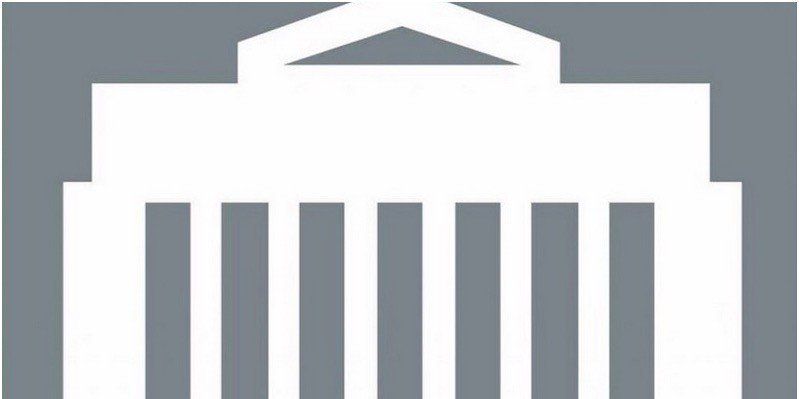Bank of Canada lowers overnight rate target to ¼ percent
Martin Jensen • March 27, 2020

The Bank of Canada today lowered its target for the overnight rate by 50 basis points to ¼ percent. The Bank Rate is correspondingly ½ percent and the deposit rate is ¼ percent. This unscheduled rate decision brings the policy rate to its effective lower bound and is intended to provide support to the Canadian financial system and the economy during the COVID-19 pandemic.
The spread of COVID-19 is having serious consequences for Canadians and for the economy, as is the abrupt decline in world oil prices. The pandemic-driven contraction has prompted decisive fiscal policy action in Canada to support individuals and businesses and to minimize any permanent damage to the structure of the economy.
The Bank is playing an important complementary role in this effort. Its interest rate setting cushions the impact of the shocks by easing the cost of borrowing. Its efforts to maintain the functioning of the financial system are helping keep credit available to people and companies. The intent of our decision today is to support the financial system in its central role of providing credit in the economy, and to lay the foundation for the economy’s return to normalcy.
The Bank’s efforts have been primarily focused on ensuring the availability of credit by providing liquidity to help markets continue to function. To promote credit availability, the Bank has expanded its various term repo facilities. To preserve market function, the Bank is conducting Government of Canada bond buybacks and switches, purchases of Canada Mortgage Bonds and banker’s acceptances, and purchases of provincial money market instruments. All these additional measures have been detailed on the Bank’s website and will be extended or augmented as needed.
Today, the Bank is launching two new programs.
First, the Commercial Paper Purchase Program (CPPP) will help to alleviate strains in short-term funding markets and thereby preserve a key source of funding for businesses. Details of the program will be available on the Bank’s web site.
Second, to address strains in the Government of Canada debt market and to enhance the effectiveness of all other actions taken so far, the Bank will begin acquiring Government of Canada securities in the secondary market. Purchases will begin with a minimum of $5 billion per week, across the yield curve. The program will be adjusted as conditions warrant, but will continue until the economic recovery is well underway. The Bank’s balance sheet will expand as a result of these purchases.
The Bank is closely monitoring economic and financial conditions, in coordination with other G7 central banks and fiscal authorities, and will update its outlook in mid-April. As the situation evolves, Governing Council stands ready to take further action as required to support the Canadian economy and financial system and to keep inflation on target.
Information note
The next scheduled date for announcing the overnight rate target is April 15, 2020. The next full update of the Bank’s outlook for the economy and inflation, including risks to the projection, will be published in the MPR at the same time.
RECENT POSTS

Can You Get a Mortgage If You Have Collections on Your Credit Report? Short answer? Not easily. Long answer? It depends—and it’s more common (and fixable) than you might think. When it comes to applying for a mortgage, your credit report tells lenders a story. Collections—debts that have been passed to a collection agency because they weren’t paid on time—are big red flags in that story. Regardless of how or why they got there, open collections are going to hurt your chances of getting approved. Let’s break this down. What Exactly Is a Collection? A collection appears on your credit report when a bill goes unpaid for long enough that the lender decides to stop chasing you—and hires a collection agency to do it instead. It doesn’t matter whether it was an unpaid phone bill, a forgotten credit card, or a disputed fine: to a lender, it signals risk. And lenders don’t like risk. Why It Matters to Mortgage Lenders? Lenders use your credit report to gauge how trustworthy you are with borrowed money. If they see you haven’t paid a past debt, especially recently, it suggests you might do the same with a new mortgage—and that’s enough to get your application denied. Even small collections can cause problems. A $32 unpaid utility bill might seem insignificant to you, but to a lender, it’s a red flag waving loudly. But What If I Didn’t Know About the Collection? It happens all the time. You move provinces and miss a final utility charge. Your cell provider sends a bill to an old address. Or maybe the collection is showing in error—credit reports aren’t perfect, and mistakes do happen. Regardless of the reason, the responsibility to resolve it still falls on you. Even if it’s an honest oversight or an error, lenders will expect you to clear it up or prove it’s been paid. And What If I Chose Not to Pay It? Some people intentionally leave certain collections unpaid—maybe they disagree with a charge, or feel a fine is unfair. Here are a few common “moral stand” collections: Disputed phone bills COVID-related fines Traffic tickets Unpaid spousal or child support While you might feel justified, lenders don’t take sides. They’re not interested in why a collection exists—only that it hasn’t been dealt with. And if it’s still active, that could be enough to derail your mortgage application. How Can You Find Out What’s On Your Report? Easy. You can check it yourself through services like Equifax or TransUnion, or you can work with a mortgage advisor to go through a full pre-approval. A pre-approval will quickly uncover any credit issues, including collections—giving you a chance to fix them before you apply for a mortgage. What To Do If You Have Collections Verify: Make sure the collection is accurate. Pay or Dispute: Settle the debt or begin a dispute process if it’s an error. Get Proof: Even if your credit report hasn’t updated yet, documentation showing the debt is paid can be enough for some lenders. Work With a Pro: A mortgage advisor can help you build a strategy and connect you with lenders who offer flexible solutions. Collections are common, but they can absolutely block your path to mortgage financing. Whether you knew about them or not, the best approach is to take action early. If you’d like to find out where you stand—or need help navigating your credit report—I’d be happy to help. Let’s make sure your next mortgage application has the best possible chance of approval.

Bank of Canada maintains policy rate at 2.1/4%. FOR IMMEDIATE RELEASE Media Relations Ottawa, Ontario December 10, 2025 The Bank of Canada today held its target for the overnight rate at 2.25%, with the Bank Rate at 2.5% and the deposit rate at 2.20%. Major economies around the world continue to show resilience to US trade protectionism, but uncertainty is still high. In the United States, economic growth is being supported by strong consumption and a surge in AI investment. The US government shutdown caused volatility in quarterly growth and delayed the release of some key economic data. Tariffs are causing some upward pressure on US inflation. In the euro area, economic growth has been stronger than expected, with the services sector showing particular resilience. In China, soft domestic demand, including more weakness in the housing market, is weighing on growth. Global financial conditions, oil prices, and the Canadian dollar are all roughly unchanged since the Bank’s October Monetary Policy Report (MPR). Canada’s economy grew by a surprisingly strong 2.6% in the third quarter, even as final domestic demand was flat. The increase in GDP largely reflected volatility in trade. The Bank expects final domestic demand will grow in the fourth quarter, but with an anticipated decline in net exports, GDP will likely be weak. Growth is forecast to pick up in 2026, although uncertainty remains high and large swings in trade may continue to cause quarterly volatility. Canada’s labour market is showing some signs of improvement. Employment has shown solid gains in the past three months and the unemployment rate declined to 6.5% in November. Nevertheless, job markets in trade-sensitive sectors remain weak and economy-wide hiring intentions continue to be subdued. CPI inflation slowed to 2.2% in October, as gasoline prices fell and food prices rose more slowly. CPI inflation has been close to the 2% target for more than a year, while measures of core inflation remain in the range of 2½% to 3%. The Bank assesses that underlying inflation is still around 2½%. In the near term, CPI inflation is likely to be higher due to the effects of last year’s GST/HST holiday on the prices of some goods and services. Looking through this choppiness, the Bank expects ongoing economic slack to roughly offset cost pressures associated with the reconfiguration of trade, keeping CPI inflation close to the 2% target. If inflation and economic activity evolve broadly in line with the October projection, Governing Council sees the current policy rate at about the right level to keep inflation close to 2% while helping the economy through this period of structural adjustment. Uncertainty remains elevated. If the outlook changes, we are prepared to respond. The Bank is focused on ensuring that Canadians continue to have confidence in price stability through this period of global upheaval. Information note The next scheduled date for announcing the overnight rate target is January 28, 2026. The Bank’s next MPR will be released at the same time.

Thinking of Buying a Home? Here’s Why Getting Pre-Approved Is Key If you’re ready to buy a home but aren’t sure where to begin, the answer is simple: start with a pre-approval. It’s one of the most important first steps in your home-buying journey—and here's why. Why a Pre-Approval is Crucial Imagine walking into a restaurant, hungry and excited to order, but unsure if your credit card will cover the bill. It’s the same situation with buying a home. You can browse listings online all day, but until you know how much you can afford, you’re just window shopping. Getting pre-approved for a mortgage is like finding out the price range you can comfortably shop within before you start looking at homes with a real estate agent. It sets you up for success and saves you from wasting time on properties that might be out of reach. What Exactly is a Pre-Approval? A pre-approval isn’t a guarantee. It’s not a promise that a lender will give you a mortgage no matter what happens with your finances. It’s more like a preview of your financial health, giving you a clear idea of how much you can borrow, based on the information you provide at the time. Think of it as a roadmap. After going through the pre-approval process, you’ll have a much clearer picture of what you can afford and what you need to do to make the final approval process smoother. What Happens During the Pre-Approval Process? When you apply for a pre-approval, lenders will look at a few key areas: Your income Your credit history Your assets and liabilities The property you’re interested in This comprehensive review will uncover any potential hurdles that could prevent you from securing financing later on. The earlier you identify these challenges, the better. Potential Issues a Pre-Approval Can Reveal Even if you feel confident that your finances are in good shape, a pre-approval might uncover issues you didn’t expect: Recent job changes or probation periods An income that’s heavily commission-based or reliant on extra shifts Errors or collections on your credit report Lack of a well-established credit history Insufficient funds saved for a down payment Existing debt reducing your qualification amount Any other financial blind spots you might not be aware of By addressing these issues early, you give yourself the best chance of securing the mortgage you need. A pre-approval makes sure there are no surprises along the way. Pre-Approval vs. Pre-Qualification: What’s the Difference? It’s important to understand that a pre-approval is more than just a quick online estimate. Unlike pre-qualification—which can sometimes be based on limited information and calculations—a pre-approval involves a thorough review of your finances. This includes looking at your credit report, providing detailed documents, and having a conversation with a mortgage professional about your options. Why Get Pre-Approved Now? The best time to secure a pre-approval is as soon as possible. The process is free and carries no risk—it just gives you a clear path forward. It’s never too early to start, and by doing so, you’ll be in a much stronger position when you're ready to make an offer on your dream home. Let’s Make Your Home Buying Journey Smooth A well-planned mortgage process can make all the difference in securing your home. If you’re ready to get pre-approved or just want to chat about your options, I’d love to help. Let’s make your home-buying experience a smooth and successful one!

